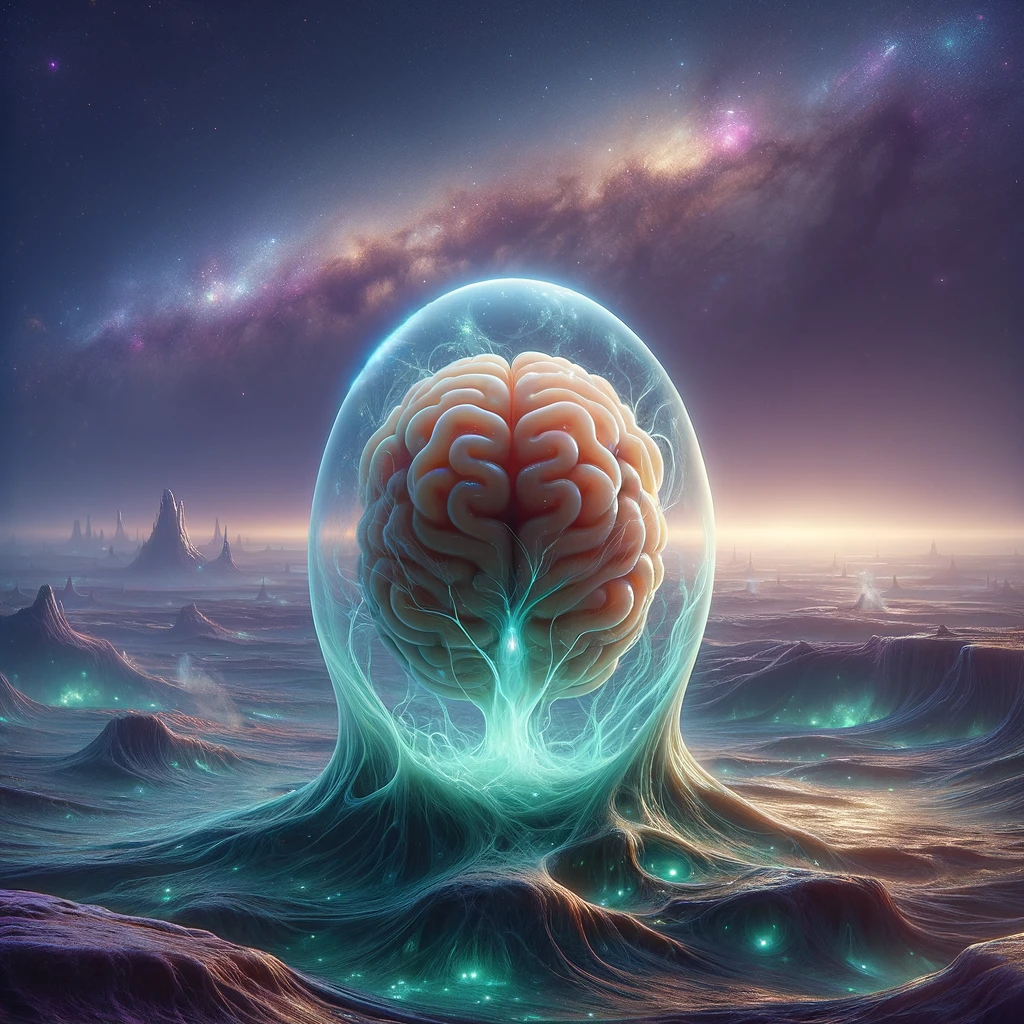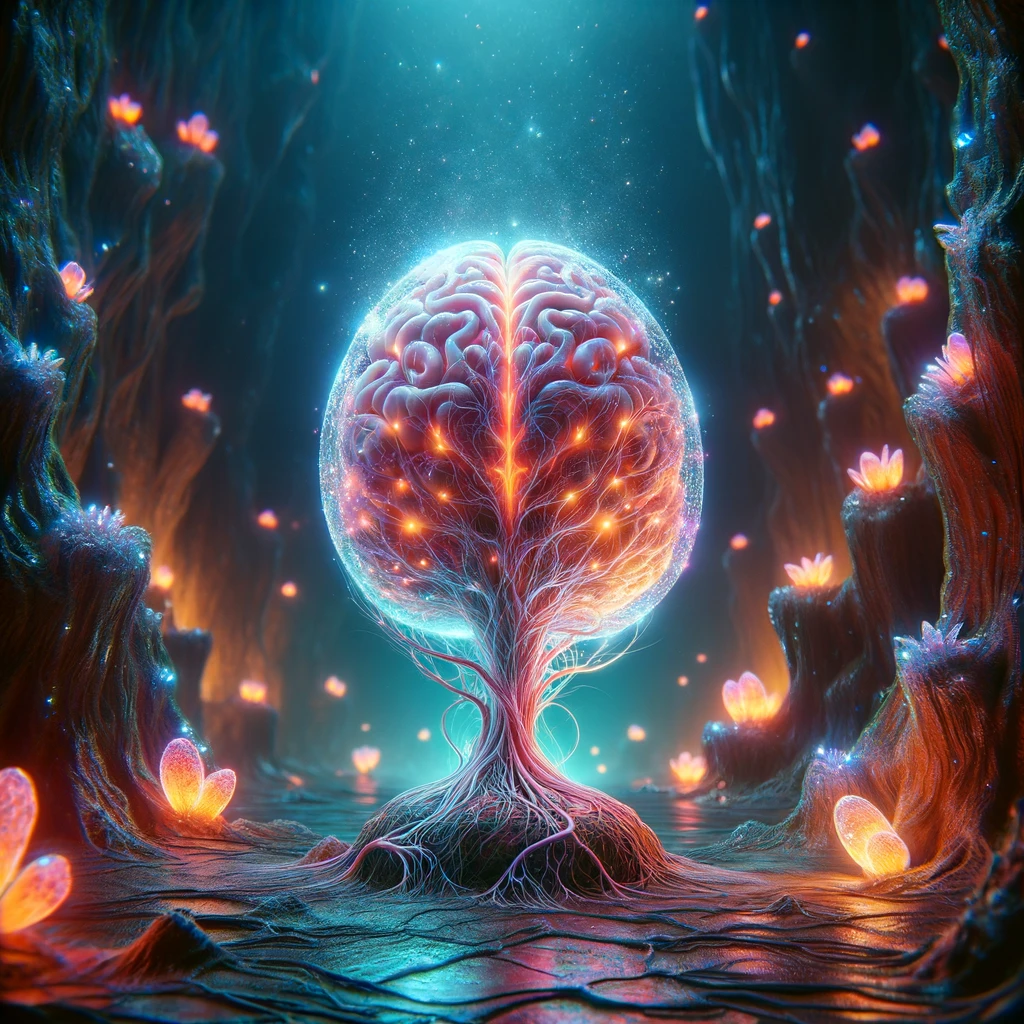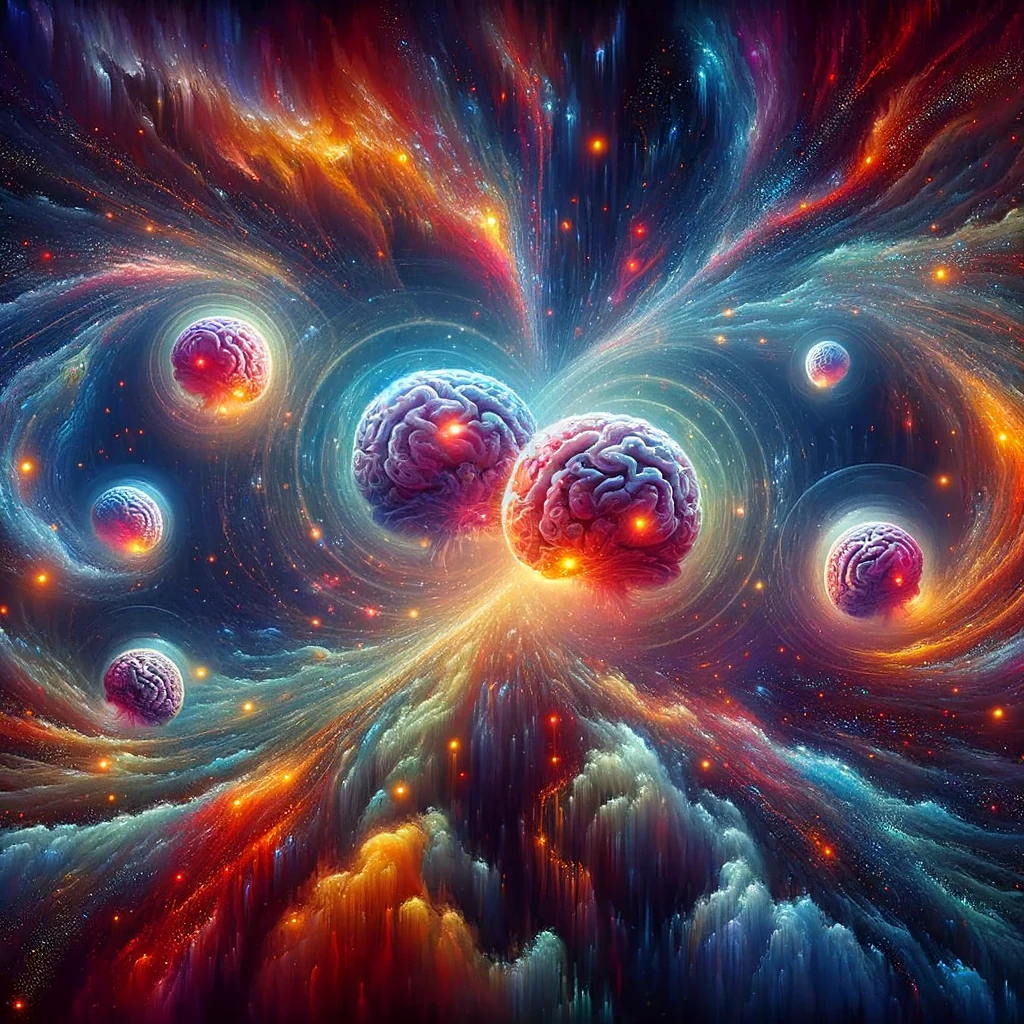
Artificial General Intelligence as a Poly-Edged Sword
Artificial General Intelligence (AGI) stands at the frontier of technological evolution, embodying the pinnacle of what artificial intelligence can achieve. Unlike its predecessors, AGI promises a level of autonomy and capability that mirrors human intelligence, posing profound questions about the future of human-machine interaction.
This intricate black and white pencil drawing is a masterful blend of surrealism and mathematical precision, evoking the essence of M.C. Escher’s work. Central to the piece is the Penrose triangle, seamlessly integrated with a tessellation of geometric shapes that morph into one another, symbolizing the concept of metamorphosis. The drawing’s play with perspective and optical illusions creates a captivating sense of infinity, with endless staircases and looping paths defying conventional logic.
Reflective surfaces introduce symmetry, while natural elements merge organically with fantastical architectural forms, challenging the viewer’s perception of reality. The text embedded within the drawing speaks to the profound implications of Artificial General Intelligence (AGI), likening it to a “Polyedged Sword” poised to redefine human-machine interaction.
This artwork is not just a visual feast but a philosophical exploration, urging contemplation of AGI’s potential to reshape our world.

The Universal Technology: AGI’s Ubiquitous Influence
Dubbed the first “universal technology,” AGI’s reach is expected to permeate every facet of human life, from healthcare and education to governance and personal relationships. Its universal nature underscores the significance of its impact, offering both unprecedented opportunities and challenges.
This black and white pencil drawing intricately integrates human figures and brains within a surreal landscape of impossible objects and detailed tessellations. The central Penrose triangle is surrounded by geometric shapes that transform into each other, symbolizing the theme of evolution. Human figures and brains interact with these elements, emphasizing the simulation aspect where digital, physical, and biological worlds converge.
The artwork manipulates perspective and optical illusions, creating a sense of infinity with endlessly looping paths and reflective surfaces introducing symmetry. The embedded text articulates the profound impact of AGI as a universal technology, permeating all aspects of human life from healthcare and education to governance and personal relationships.
This piece blurs the lines between reality and simulation, urging viewers to consider AGI’s transformative potential. It captures the dual nature of technological progress, offering unprecedented opportunities and challenges, ultimately creating a new reality where human experiences are deeply altered.

The artwork plays with perspective and optical illusions, creating a sense of infinity and endless exploration. Natural elements blend with fantastical architectural forms, challenging conventional perceptions of reality. The embedded text highlights AGI’s broad potential, emphasizing its dual nature as both a revolutionary tool and a source of ethical dilemmas and risks. This drawing invites viewers to reflect on AGI’s profound impact on human capabilities and societal structures, blending art and philosophy into a thought-provoking visual narrative. The human figures add a relatable touch, emphasizing the human-machine interaction central to AGI’s development.

The Spectrum of AGI’s Impact
The play with perspective and optical illusions creates a mesmerizing sense of infinity, featuring endlessly looping paths and reflective surfaces that introduce perfect symmetry.
The drawing merges natural elements with architectural structures, portraying multiple planes of reality that defy conventional understanding of gravity and spatial relationships. The embedded text highlights the profound spectrum of AGI’s potential, juxtaposing revolutionary advancements with ethical dilemmas and risks.
This piece invites the viewer to ponder the dual nature of technological progress, symbolizing AGI as both a tool and a weapon with the power to reshape industries and human capabilities, yet posing significant challenges and risks. The artwork is a thought-provoking blend of art and philosophy, urging deep reflection on the future of human-machine interaction.

Generative vs. Degenerative Effects
The discourse around AGI often centers on its generative capabilities—its potential to create new knowledge, solutions, and even forms of art. However, this perspective must be balanced with an understanding of AGI’s degenerative effects, including the erosion of privacy, the amplification of social inequalities, and the potential for an existential crisis for humanity.
This black and white pencil drawing intensifies the theme of decay, incorporating human figures and elements symbolizing erosion into a surreal landscape of impossible objects and intricate tessellations. The central Penrose triangle is surrounded by geometric shapes that transform into each other, capturing the theme of evolution. Human figures interact with the scene, amidst numerous tombs, crumbling structures, overgrown vegetation, and decaying elements, emphasizing the degenerative impacts of AGI.
The artwork skillfully manipulates perspective and optical illusions, creating a sense of infinity with endlessly looping paths and reflective surfaces introducing symmetry. Overgrown graves and dancing skeletons add a hauntingly beautiful touch, symbolizing the erosion of past and the remnants of what once was. The enhanced decay, with more tombs and signs of deterioration, underscores the narrative of AGI’s potential to erode privacy, amplify social inequalities, and pose existential risks.
This piece invites viewers to reflect on the nuanced impacts of AGI, balancing its potential to create new knowledge and solutions with the risks it poses to society. It underscores the importance of a balanced approach to AGI’s development and integration, blending art and philosophy into a thought-provoking visual narrative.

Forging a Path Forward with AGI
As we stand at the cusp of AGI’s realization, the need for a comprehensive framework to navigate its complexities becomes paramount. Collaborative efforts are called for among technologists, policymakers, and the public to ensure that AGI serves as a force for good, propelling humanity towards a future where technology and human values are in harmony.
This black and white pencil drawing features a frontal view of a human skull as its central focus, surrounded by elements of decay and erosion. Crumbling structures, overgrown vegetation, and numerous tombs frame the skull, while dancing human skeletons and little graves overgrown with plants add to the haunting atmosphere.
Gradually, geometric shapes and impossible objects such as a Penrose triangle and tessellations are incorporated into the scene, symbolizing evolution and metamorphosis. Reflective surfaces and symmetrical designs blend seamlessly with the decaying architectural structures, creating a complex interplay of multiple planes of reality that challenge conventional perceptions of gravity and spatial relationships.
The embedded text discusses the dual nature of AGI, highlighting its potential to create new knowledge and solutions, as well as its degenerative effects, including the erosion of privacy, the amplification of social inequalities, and the potential for an existential crisis for humanity. This artwork critically assesses the dichotomy between the generative and degenerative impacts of AGI, urging a nuanced approach to its development and integration into society.
This piece invites viewers to contemplate the profound implications of AGI, balancing its revolutionary capabilities with the risks it poses, encapsulating a thought-provoking blend of art and philosophical inquiry.




